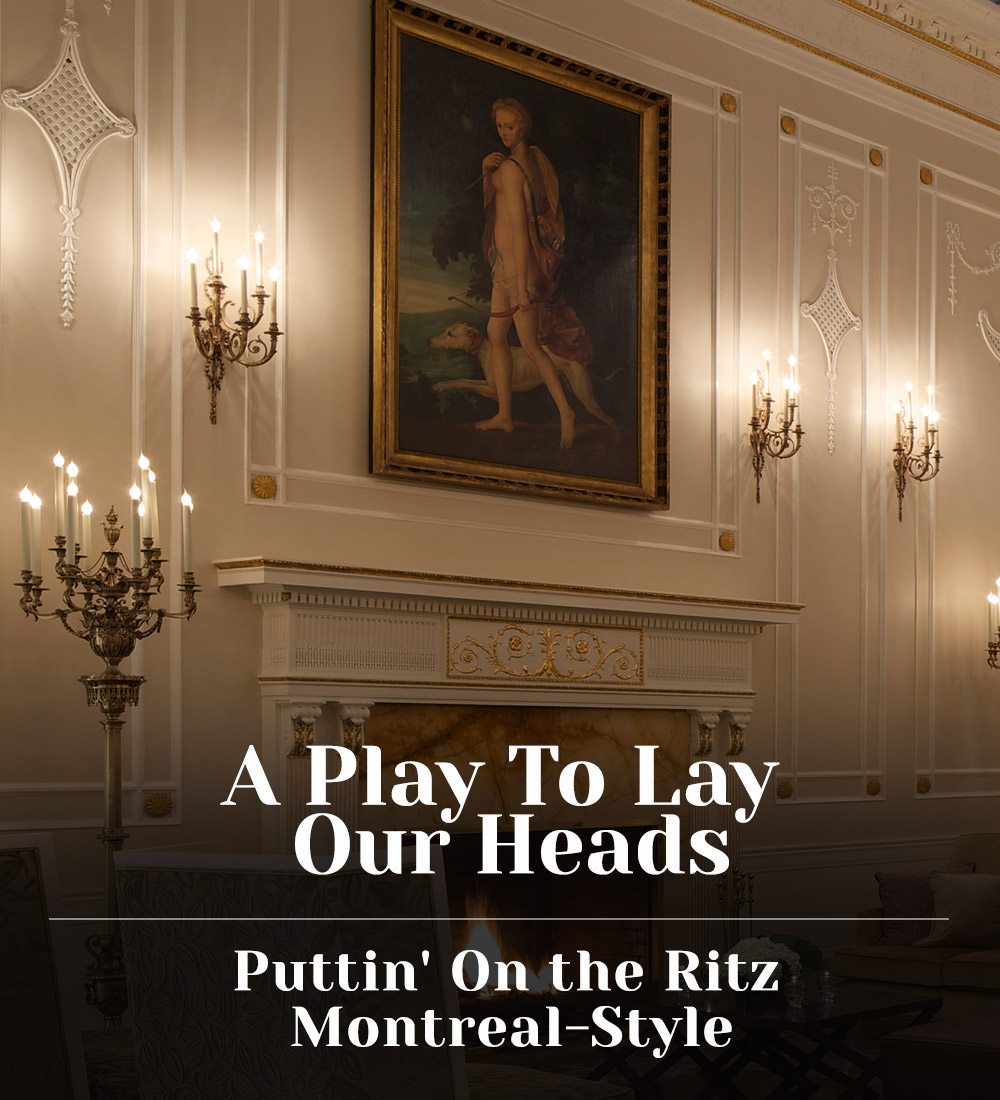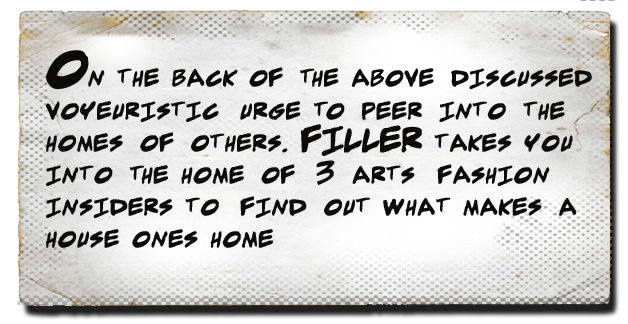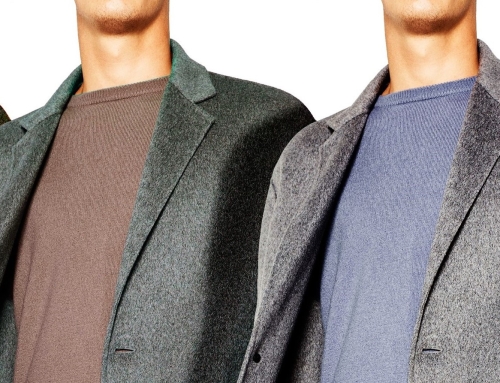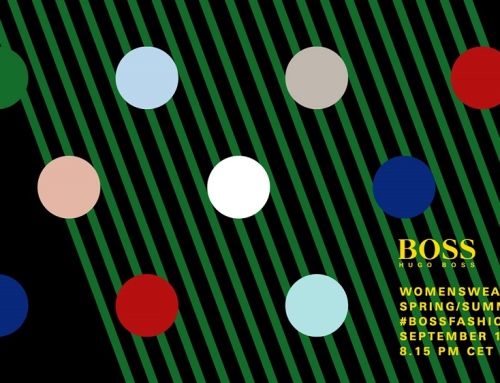There was once a certain cachet attached to those who got to venture inside the homes of the world’s elite. From Vogue exclusives to sanctioned visits reserved only for the Barbara Walters and Oprah Winfreys of the world to MTV Cribs, the home has always been a curious – yet hidden – place for those who live their lives out on the world stage.
Today, traversing the wide map of the digital frontier, we’ve expanded beyond TV specials and décor magazines to discover fashion proper reveling in the business of interiors. In short, we’re obsessed.
What was once documented for very niche audiences – through quarterly issues of Elle Décor and the like – is now in abundance on the internet. The cachet has turned common. From the rise of street style snappers that troll for untapped style stars came a silent, yet steady, rise in our fascination and hunger for a deeper look into how these nouveau vedettes – from the so-called everyday people to high-powered editors, stylists and the occasional cult star – live when they’re not playing.
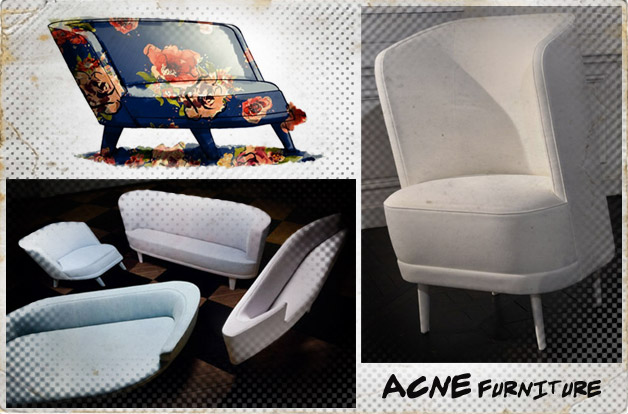
The earliest incarnation that I can remember of this new “special interest” in fashion is photographer and illustrator Todd Selby’s website: The Selby Is In Your Place. When he registered his namesake website almost five years ago, it was so that he could gain exposure for his work – a digital scrapbook, really. At first, he started shooting Brooklyn homes of friends of friends and the creative class of the burgeoning borough (artists, designers, photographers). Soon, his work started to materialize and his website now averages 114,000 daily page views. Looking back at Selby’s earlier work, you’ll notice he’s not exactly a great technical photographer, not unlike Sartorialist Scott Schuman, the much lauded street style godfather who turned his moonlighting fancy into a global career. But Selby has grown, and his work reflects his continued development and commitment to his photography, and ultimately the evolution of documenting interiors as a veritable craft.
In 2008, while watching The September Issue, the documentary about the making of a Vogue September, I distinctly remember being giddy at the idea that a film crew was probably going to take us inside Anna Wintour’s house. This was right around the time when the Selby’s work started to make the Inter-rounds — and I was instantly hooked. I looked as hard as I could at every detail in Wintour’s house when it was in frame: the beige paint and palette to match, her cereal bowls… But alas, it was nothing more than your typical Upper East Side townhouse. I didn’t dwell too long, since Vogue’s then fashion features editor Sally Singer was profiled on Selby’s site shortly after, with her family and realness (read: accessibility) in tow. And that’s what I assume people love about his work; even though Selby is now a name, he remains consentient in profiling subjects who you actually want to see (like Singer). In the mind of the modern voyeur, accessibility— like the web itself — is paramount; in other words, we covet to own, not to dream to own. No, I don’t need to see another celebrity Malibu home (nice, but terribly un-aspirational) or what reality star socialite Olivia Palmero’s closet looks like (of course she’s best dressed – with money!); show me jewellery maven Pamela Love’s Brooklyn apartment instead (I could totally do that photo arrangement above my mantel). It’s also points to why it’s easy to be enthralled with the homes of other people and why we’ve become fanatical about this nouveau street style-esque approach to interiors: the Selby’s work removes the gloss from its subjects, unlike magazine editorials before it. You know there’s no staging, no propping, nothing is contrived about the feature or the profile.
And then came The Coveteur girls, a Canadian twosome that is further pushing voyeurism in fashion into new directions.
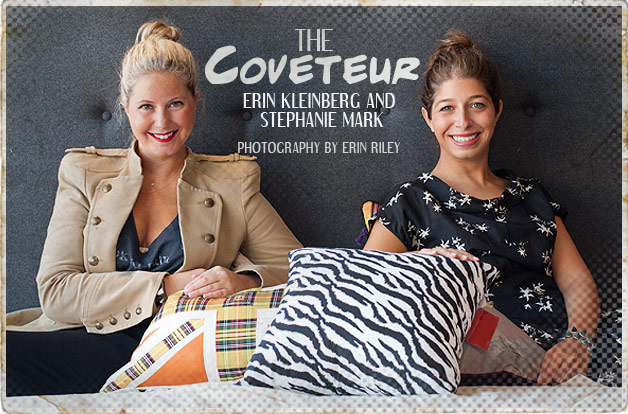
While the Selby may not be about the gloss, the Coveteur ladies have carved a niche that thrives on it. Launched in January of this year by designer Erin Kleinberg and stylist Stephanie Mark, the website seeks to showcase and merge the closets and homes of fashion’s favourite people. “The day after we saw The Social Network, we were uber-inspired to start a website,” shares Kleinberg in our interview. “We are both obsessed with street style and thought why not take the voyeurs of the world one step further, allowing them to deconstruct the looks they see in the street by viewing their entire wardrobe.”
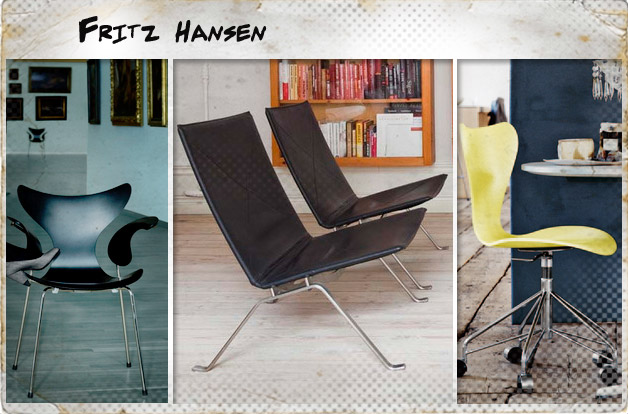
What the girls do is what the Selby doesn’t. They carefully curate a selection of garments and place them neatly – meticulously, even – around a subject’s home. They also enlist the help of photographer Jake Rosenberg (almost an antithesis to the street style game itself) to capture the magic. In many ways, the girls have “professionalized” the gig, conceiving their website not as a hobby, but as a career, an actual way of life. With a sleek and crisp contemporary design to match their photographs, the whole thing reads more like a glossy mag editorial adapted for the web. Sometimes you want a little more home, sometimes you want a little more clothing, and that’s what keeps readers coming back. And that’s the point.
The day The Coveteur went live it gained an impressive 20,000 hits on buzz alone. While the staging may be one thing, the garments and shots they arrange still tell their own stories; it’s an evolution of street style using the medium as the message. “What we’ve learned is that people are major voyeurs,” says Kleinberg. “This way not only do you get to see their wardrobes but you get to see the homes of international tastemakers. You really get a great sense for the entire aesthetic of the individual by viewing their home environment.” Indeed, street style fashion can feel a little too public, or too widespread. Sure, we love what this random girl is wearing, but we’d love to see how Marc Jacobs lives if that were possible. And now it kind of is.
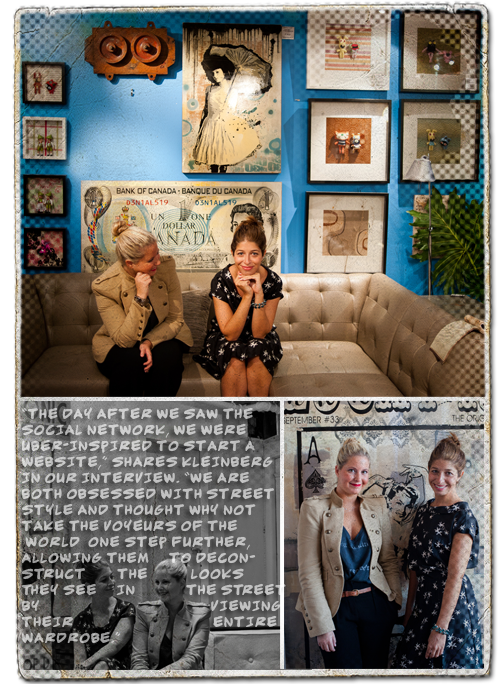
The girls won’t give away their casting secrets, but in a little under eight months, The Coveteur aesthetic has exploded. Not only do the girls feature designers and the usual style suspects, but also boutique owners and behind-the-scenes types, and, most recently, a dip into office spaces. What the girls show is all of the elements (from work to home to fashion) that inform a person’s taste, and that’s why what they’re doing is only serving to perpetuate our interest. And it’s never just been about the space for neither Selby nor the Coveteur girls; it’s about the whole package. They know that readers – the conspicuous consumers that we are – want to devour the entire contents of a subject’s life. The Selby attaches endearing and thoughtful illustrated Q+As with his features, while Kleinberg and Mark present a story behind each item showcased, as told by the subjects in their own words.
But is this a fad? Fashion has always had a longstanding relationship with interior design. So what does this sudden wave of voyeurism mean for the furniture industry? Remember, just last March, during Toronto’s fashion week, textile company Korhani Home sent down what seemed to be the world’s first ever “rug fashion show.” What exactly does that mean? Designers at the company interpreted the house’s signature prints and styles for Fall 2011 and adapted them into runway ready “garments.” A first for the Canadian industry, jaws were dropping, prompting tweets about converting their own area rugs or what an ingenious marketing plan the whole thing had been. But it’s a logical step in the progression of how interiors can very easy be “fashion,” and how both are almost interchangeable and complementary in one’s own personal tastes.
Christian Grosen, head of design for Danish furniture brand Fritz Hansen (a European legend in their own right), sees the trend as something legit that will help in the creation of more things tailored to what shoppers may actually want or be looking for. “There is a voyeuristic element to it, but it’s also super inspiring to get a chance to see how creative people live and design their private homes. Your home tells a lot about who you really are.” Grosen says that over the last 20 years the biggest thing to affect his industry is the increase in income and spending, leading to a demand for higher quality products that offer not only function, but also style. Arren Williams, an interior designer and trend forecaster in Toronto, feels the same way. Williams, who parlayed his talents into a position as creative director of home furnishings at The Hudson’s Bay Company (one of Canada’s largest retailers), feels the strong correlation between fashion and interiors paved the way for this new progression of style voyeurism. “It’s one of those things that has been bubbling under the centre, the idea of creating a curative space,” he says. “People who work in fashion and related industries have a very set point of view. With fashion editing and finding, people are always looking for unusual pieces that mean something to create a stunning shot or look. Putting a look together [in an editorial or an outfit] is the same as putting together a room.”
Grosen, however, is quick to muse on whether this current online obsession is even a trend or a fad du jour on a global stage at all. “In Denmark, our homes have always been an important part of our lives and something we prioritize and spend a lot of money and time on. Maybe it’s because of our climate; we spend a lot of time indoors.” It’s true, the Coveteur girls mostly show off North American homes, polished and put together, as did Todd Selby when he first started. (He now features people as far as Australia and New Zealand, no doubt a byproduct of his success and exposure.)
Robert Little, a curator for European Decorative Arts at the Royal Ontario Museum, echoes the idea that North America was late to catch on to the stylized aspect of furniture as fashion. The history of furniture on its own is fascinating. “In 20th century France, furniture pieces, especially art deco, began to push the boundaries of what was considered tasteful and appropriate for the home,” he says, and that many of the pieces that influence modern design today – with sleek finishes and shapes and multi-purpose functions – were commissioned as customs as early as the 1920s. “These were not mass-produced until well after the Second World War, trickling first to England, then to North America.” Because of this, Little says furniture and interior design was intended for a very small segment of French society and equivalent to today’s haute couture designs, pieces being made to order like a dress with no such thing as “off the rack.”
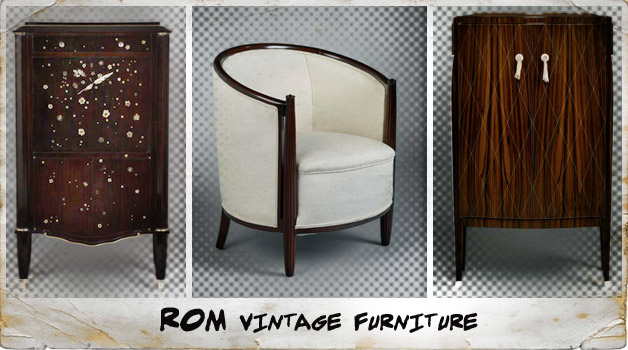
But will designers actually take cues and carve out trends and unfilled niches from the homes of the featured and the Twitter feeds of the admirers? The Coveteur girls gage the trend and whether the current wave of interior design and modern minimalism are reflected in what we’ve been seeing online. “The trend my friend is Ebay,” declares Kleinberg. “All ‘cool’ items, frames, candleholders, vintage mirrors, etc. are always from Ebay. George Kotsiopoulos quoted it well: it’s his ‘own personal virtual flea market.’ There’s also a lot of DIY for sure; the tastemaker talents definitely don’t stop at their day jobs!” There’s a start.
The Bay’s Williams, now charged with scouting wares for 90 stores across Canada, also sees the importance in recognizing crafty, do-it-yourself-ish trends that reflect a rustic appeal in home design. “Rustic has really come in and influenced traditional and modern styles of design,” he tells me, playing the dual role of analyst and buyer. “It gives a sense of warmth, and we want those crafty, artisnal, handmade objects. People don’t want disposability; they want to feel connected to the objects they own.” So what do we make of all the recent furniture announcements coming our way? Swedish brand Acne famously launched its first line of furnishings during Paris Couture Week in 2010 and they’re showing new pieces alongside Fritz Hansen at the London Design Festival in September. Diane von Furstenberg also has her own line of throw pillows and cutlery and all the other details to fill from your home from the closet to the kitchen. Williams and the Bay, paving the way for exclusive brands like Topshop to reach Canada, were able to secure an exclusive deal to sell the DVF collection. “We’re working constantly to bring in what customers want,” he says, citing social media as a reason people find out about new collections like DVF’s home line almost immediately after it’s announced and come in wanting it now-now-now, sometimes before he’s even had a chance to check it out for himself. “Great fashion brands are moving into home, but the difference you can see with these new ventures is a clear connection with the style and the finishing and linking it all back to the runway.” Proenza Schouler recently teamed up with interiors giant Knoll’s Luxe division to create upholstery options inspired by their Fall 2007 collection. And the ROM’s Little says that signals an even greater change for the industry, again. “In the ’50s, you wouldn’t have had an industrial designer working for Knoll, or any other company, talking about interiors as fashion in a way that you have now. That’s probably the biggest thing that has changed.”

Fritz Hansen’s Grosen is quick to point out, however, that despite their ability to complement and inspire each other, fashion and furniture remain very different: “Furniture is slow, and fashion is fast. Furniture is something you buy for your private home with a longer time perspective in mind (at least if you spend a lot of money on it) and it tells a lot about who you are. So does fashion, but you can easily play with different identities from day to day which is more difficult when it comes to interiors.” Basically, when you commit to a look for your home, you’re committing indefinitely. I think back to how many times I’ve changed my current space (minutely in two years), and then how many times the subjects we fawn over may have changed theirs. Exactly.
So when I ask the Coveteur girls to finish the sentence “Home is…” for me, their response is only too appropriate as a sign of our fashionable times: “Where you eat on Fornasetti plates, and sleep under a Missoni duvet.” Yup, that sounds about right, possible even: I naturally don’t need the Missoni dress, but a duvet is something I’ll use every night, forever even. And you might even be able to have a little piece of Missoni yourself as the brand gears up to launch a collaboration with US retailer Target, the biggest ever for the department store. Not only will the new joint effort feature clothing inspired by the fashion houses ’60s prints, but also printed plates, cutlery, martini shakers – an entire life if you needed it. Now how will we all afford our rents next month?







